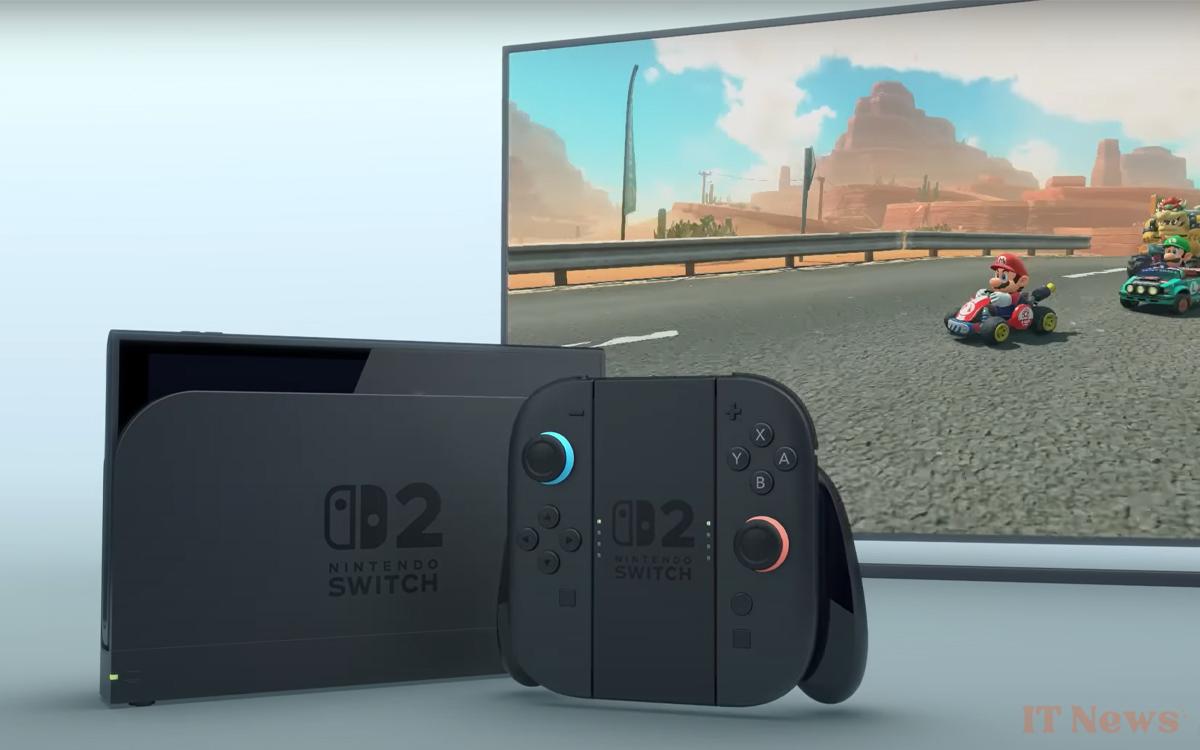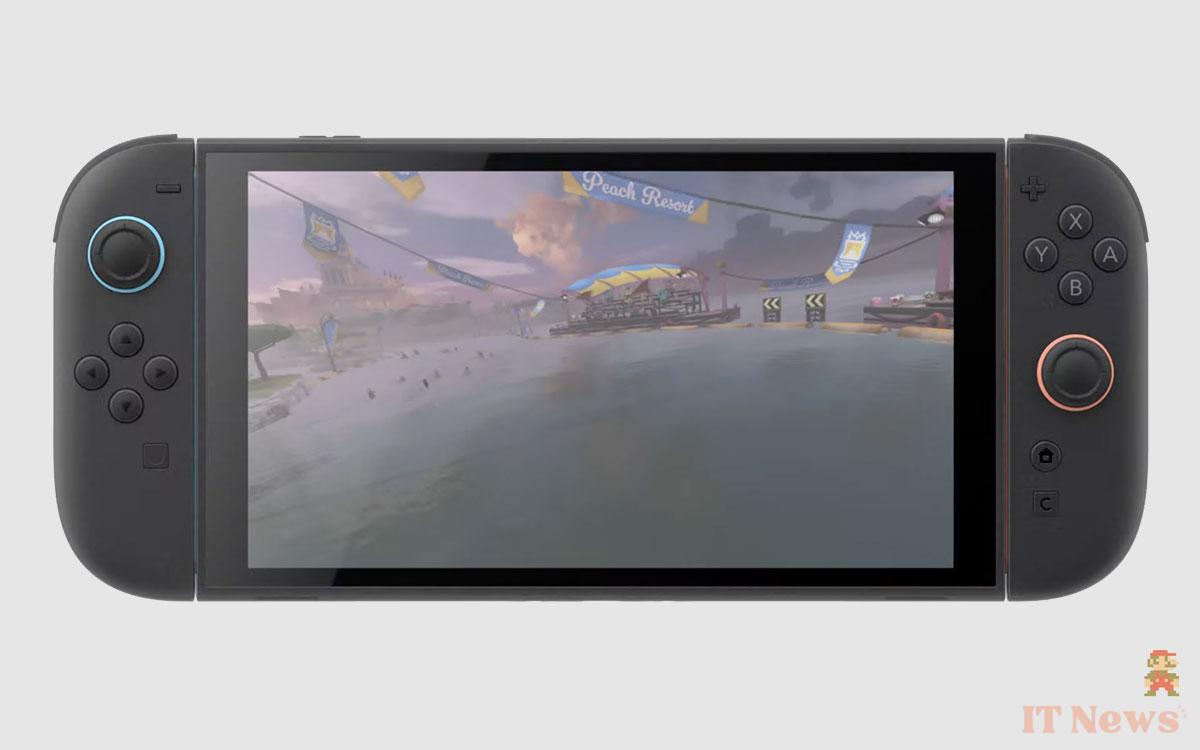While the Nintendo Switch 2 has just been unveiled, additional information is arriving about the new portable console. Particularly regarding the technical specifications. We suggest you compare what changes with the new console compared to the Nintendo Switch 1 released in 2017.
Nintendo was highly anticipated for the release of the Switch 2. And we now finally have a firm grasp on most aspects of the console, including the price, design, and the lineup of video games available at launch. However, there is still one aspect that the company skimmed over a bit during the Nintendo Direct event on Wednesday, April 2, 2025: the technical specifications of the new console.
The information has since been released, allowing us to dig a little deeper into the subject and offer you a first comparison of the technical specifications of the Nintendo Switch 2 and the Nintendo Switch 1.
| Nintendo Switch 1 | Nintendo Switch 2 | |
|---|---|---|
| Dimensions | 102 × 239 × 13.9 mm (with Joy-Con attached) | 116 × 270 x 14 mm (with Joy-Con attached) |
| Weight | 297 g (398 g with Joy-Con attached) | n.c. |
| Screen | - 6.2" - LCD capacitive touchscreen - 1280 × 720 pixels | - 7.9" -LCD capacitive touchscreen - 1920 x 1080 pixels (Full HD) - 120 frames/s - HDR |
| NVIDIA chip | Custom Tegra | NVIDIA Custom Tegra next generation (presumably an NVIDIA T239 chip with ray tracing and DLSS) |
| Internal memory | 32 GB | 256 GB |
| Memory Expansion | - Yes, via a microSD, microSDHC, and microSDXC compatible slot | - Yes – microSD Express only (supports new high-speed cards) - Not compatible with traditional microSD/HC/XC cards (based on available data) |
| Wireless Connectivity | - Wi-Fi (IEEE 802.11 a/b/g/n/ac) - Bluetooth 4.1 - On the dock, a wired network connection is possible via a LAN adapter (sold separately). | - Wi-Fi 6 (802.11ax, 2.4/5 GHz, 80 MHz channel) - Bluetooth (n.c. version) - NFC (built-in Amiibo reader) - Ethernet port integrated into the dock |
| Video output | 1920 × 1080 pixels (Full HD 1080p) at 60 frames/s | - up to 3840 × 2160 pixels at 120 frames/s on compatible games |
| Audio | - Stereo (built-in speakers) | - Stereo (Improved built-in speakers - Mic for Game Chat mode |
| Ports | 1 × USB Type-C port (used for charging or docking) | - 2 × USB Type-C ports (new: one port on the bottom + one port on the top of the console, usable for charging and docking/peripherals) |
| Audio jack | - Yes | - Yes |
| Battery | 4310 mAh (internal, non-removable) | n.c. |
Nintendo Switch 2 delivers a more refined gaming experience for the most part
The first aspect is that of dimensions. While it is not really thicker than the previous generation, the Nintendo Switch 2 is a rectangle significantly larger than the iteration released in 2017. We are talking about a surface area nearly 30% larger – enough to accommodate a significantly larger LCD screen (7.9″ compared to 6.2″).
This screen also displays a little more pixels, since we go from 1,280 × 720 pixels to 1,920 x 1080 pixels. Beyond that, this new screen benefits from a higher refresh rate of 120 images per second, for a smoother rendering. All this with, now, HDR technology which allows for a more immersive result.
On the chip side, Nintendo remains faithful to Nvidia Tegra, with however at this stage little really official information on the new generation. However, everything indicates that this is actually an Nvidia T239 with Ray Tracing and DLSS technology. Another good point is the internal memory, which goes from a rather limited 32 GB on the 2017 console to a quantity of 256 GB more in line with the use of the console in real conditions.
Expanding the memory remains possible via microSD cards, microSD Express cards that are faster and adapted to the console's games, which are understandably heavier than the previous generation. The console is now reportedly incompatible with older, slower microSD cards.
The new Nvidia chip also allows for the upgrade to Wi-Fi 6 technology. There's no specific information, however, on Bluetooth technology—which is expected to upgrade to a 5.x standard, but can't be confirmed. Once docked, the console delivers wired network connectivity without an adapter. It's also possible to enjoy 4K resolution (up to 60 frames per second) by connecting the Switch 2 to your TV in this mode.
Note that Nintendo has improved the output quality of the built-in speakers, although all the technical details are not yet known. A microphone has also appeared on the case for communication during multiplayer games. It clearly picks up the player's conversations even from several meters away, according to the brand. It's also associated with powerful noise cancellation algorithms.
Finally, it's worth noting that Nintendo doesn't mention battery life or the exact capacity of the battery. This is an important point for a portable console. We'll be sure to test this aspect during our review of the Nintendo Switch 2. It's worth noting that the Joy-Con's exact specifications are not yet known.





0 Comments